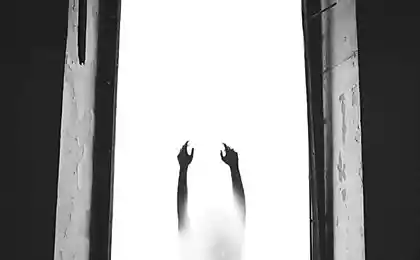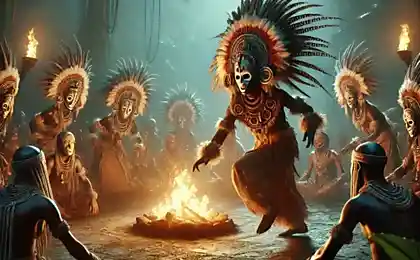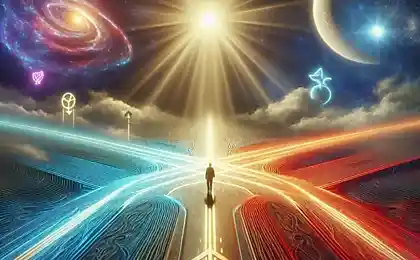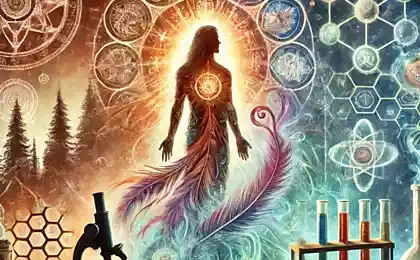465
Contamination as a moral brace: why did people invent rituals and taboos
<

How can one explain the apparent irrationality and the paradox of some of the taboos and religious prohibitions? What mechanisms were used by our ancestors to strengthen the social structure of their communities? "Evil" as a category of weird ritual as a method of ordering and "filth" as a moral brace — the main theses of the lecture on the book by British anthropologist Mary Douglas.
The search for meaning, thinking about their place in the world and their own destiny distinguishes man from the animal Kingdom. But such reflection requires significant investment of intellectual energy. How to simplify this process and save internal resources of the body? It seems that the universal response in all times and in all cultures remained categorization of life — classification of the people themselves, their actions and surrounding things.
In the process of this classification was formed also the concept of "clean" or correct and, conversely, "dirty" or dangerous. Speaking roughly, unclean in any culture is that which is not in place or what place is not defined. For example, if we draw an analogy with the physical world, the shoes in the hall seem to be quite appropriate, but, if we see them on the kitchen table, it seems we are at least strange. The same situation and with the social ideas about purity. Any marginal manifestations, deviations in this or that sphere of life lead to the understanding dropped from the system being, object or phenomenon as unclean.
A large number of vivid examples of ideas about dirty is the third book of the old Testament, Leviticus, which contains provisions concerning the conduct of the people of Israel. For example, it prescribes not to eat those sea creatures that have no fins and scales — they are considered unclean. The same situation applies to all reptiles, creeping and wriggling of the inhabitants of the land. The list of prohibitions is very high, and for a long time these rules were explained physiologically, ethically, from a medical point of view, based on the appearance of animals. Some researchers talked about the irrationality of these prohibitions, thereby dismissing the possibility of their analysis. However, in his work "Purity and danger", released in 1966, British anthropologist Mary Douglas finds a graceful rationale for these prohibitions. Each of the elements peculiar to your type of animal with certain characteristics. All that is off from these views, it appears unclean. In the case of reptiles we are talking about the uncertainty of their movement form. As she says Douglas, "if penguins lived in the middle East, they likely would have been among the unclean — as a wingless bird."
All those rules that exist in a particular society, whether it is a taboo, a moral view or written laws aimed at maintaining the social system and achieve social harmony
The concept of "unclean" is directly connected with bad. People who violate the ban, itself, defiled, must be purified. But how to do it? The most effective way is to perform the ritual: he has not only practical value, but valuable in itself as an action which can be rewritten, and interpreted the experience and which contributes to the categorization and ordering of life. And rituals can exist not only in traditional societies, it is enough to remember widespread in our culture the rituals of "knocking on wood and spitting over his shoulder."
With rituals, you can also limit and minimize the damage from uncontrolled magical forces embodied in the person (or in the not yet born child as a being whose position in society is not defined). The situation is different with the forces which they control consciously. For example, they can be attributed to the leader of the tribe, then they are not in immediate danger because it is not directed at the tribesmen. If the forces are deliberately used to harm, then the person possessing them — an evil sorcerer, to which it is necessary to apply adequate sanctions. All this eventually should lead to the adoption and strengthening of the existing social structure. Interestingly, the more the society moral norms, which are controlled by the conscience, the fewer the concepts of pollution. At the same time, these representations can bind the moral code: for example, when the situation is not clearly defined from the point of view of morality or moral censure if not reinforced by practical sanctions, then the concept of "clean" and "dirty" can be re-introduced into circulation.
All those rules that exist in a particular society, whether it is a taboo, a moral view or written laws aimed at maintaining the social system and achieve social harmony. The desire for social comfort is common to all people at all times, and this similarity unites modern man with the representative of a primitive tribe is stronger than distinguish them from features and aspects of behavior.
Source: theoryandpractice.ru
Dried leaves and flowers — ideas for home decorating
Himalayan salt, black salt and other salt alternatives























